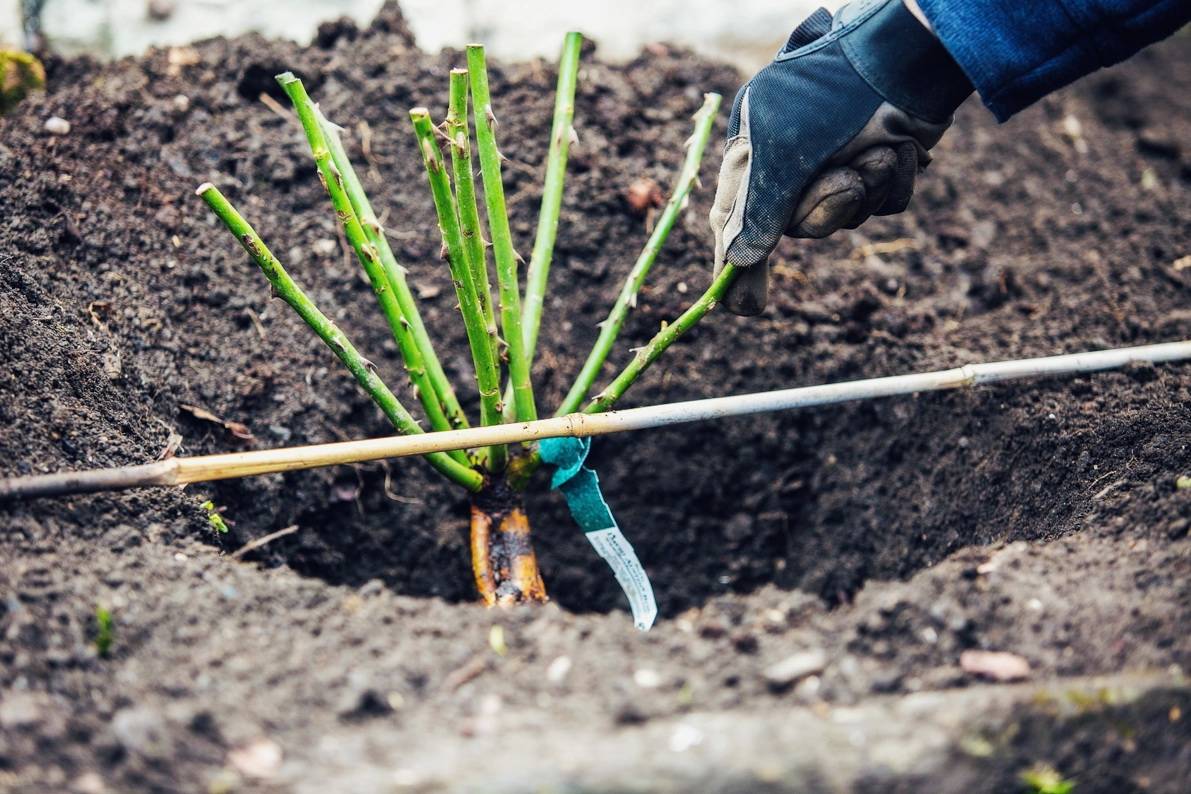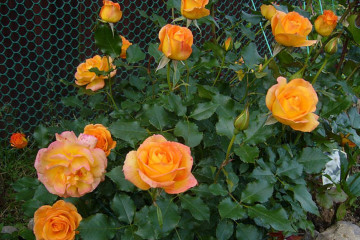Rose Lavaglut (Lavaglut) - characteristics of the culture
Content:
Rose Lavaglut, or Lavaglut, is the finest member of her family. Despite its compact size, the plant has an incredibly beautiful appearance. Bright scarlet large buds give it decorativeness.
Rose Lavaglut (Lavaglut) - what kind of floribunda variety, history of creation
The Floribunda Lavaglut rose was bred back in the 70s of the last century in Germany in order to obtain a frost-resistant flower with a classic scarlet color of buds.
Brief description, characteristic
In its description, the Loveaglut rose is slightly different from most of the flowers in its family. The shrub grows up to half a meter in height, the crown is dense and fluffy with numerous dark green leaves. Small-sized plates have a smooth, glossy surface. Rose buds are collected in inflorescences in the form of umbrellas, each of which can contain up to 20 flowers. Petals with a smooth surface and a solid bright red color. The buds are spherical, with yellow stamens in their very center.
Advantages and disadvantages of the variety
The advantages of Lavaglut include:
- abundant flowering;
- beautiful colors of buds;
- high frost resistance;
- the petals do not fade under the sun's rays;
- a small number of thorns;
- flowers do not crumble from through winds.
Of the minuses, only a predisposition to black spot disease can be distinguished.
Features of use in landscape design
Due to its high decorativeness, Lavaglut is in great demand in landscape design. Due to its compactness, it is grown on a high stem or suspended structures. Often, several small varieties of roses are planted, creating park and garden compositions.
The plant will look beautiful next to deciduous shrubs with dark green foliage.
Growing a flower: how to plant it in open ground
Growing a rose in the open field includes not only the planting process, but also the choice of a place, the preparation of planting material and the preparation of a nutritious substrate.
In what form is the landing
Lavaglut is planted using seedlings. They are grown at home on their own or purchased in nurseries, special stores.
Location selection
Rose Lavaglut grows well in bright and open areas, but with light partial shade. Avoid open spaces on the north side of the bush to keep out of strong drafts. The site must be located on a hill, otherwise groundwater will provoke the onset of root rot.
How to prepare the soil and flower for planting
The soil should have medium acidity and contain a rich composition of trace elements. For this purpose, the earth is dug up and humus or compost is introduced, as well as mineral preparations - saltpeter, superphosphate.
Before planting, you need to carry out a visual inspection of the seedlings. They must have a well-developed root system and at least two shoots. The presence of dry and dark areas on the leaves is unacceptable.
Planting procedure step by step
You need to plant a plant in open ground according to the following algorithm:
- Dig a 40 cm hole.
- Fill its bottom with expanded clay crumbs for drainage.
- Pour a small layer of substrate on top.
- Place the seedling and cover it with the remaining potting soil.
- Water and loosen the soil.
Plant care
In caring for Lavaglut, it is important to regularly carry out abundant watering, since the plant belongs to the moisture-loving representatives of the flora.
Watering rules and humidity
The regularity of watering should be the same throughout the entire active growth of the plant. Only during dry periods is it allowed to increase the frequency of the procedure. You need to water the shrub at least 3 times a week with rain or river water.
Top dressing and soil quality
You can feed the rose shrub with both organic and mineral fertilizers. Organic matter is applied three times during the active season. For this, ash, humus, horse manure, compost or chicken droppings are used. Once every two weeks, you can fertilize the bush with a mullein solution.
Among the mineral preparations for rose Lavaglut, nitramophoska, superphosphate or Agricola are suitable.
Pruning and replanting
Pruning is required twice per season: in early spring and in autumn before wintering. Then the old and excess side shoots are removed to form a beautiful crown.
Transplants are carried out only when absolutely necessary: a disease of a bush or its planting in an inappropriate place.
Features of wintering a flower
Floribunda Loveaglut rose requires mandatory shelter for the winter. The plant is able to withstand cold at -7 degrees, with a further decrease it can die without protection. First, the bush is completely cut off at the root and spud with soil, then spruce branches are placed tightly on top.
Blooming rose
Rose Lavaglut blooms with beautiful scarlet flowers, perfect round shape. During the flowering period, the dark green foliage of the plant effectively contrasts with the bright color of the buds.
A period of activity and rest
With the end of the last frosts, they remove the cover of the bush and fertilize it with organic matter.
During this period, the growing season of the plant begins. The rose goes to rest when the temperature drops below -5 degrees, usually in October or early November.
Care during and after flowering
During the budding period, it is necessary to apply potassium-phosphorus fertilizers.
After the rose has faded, they begin to slowly prepare it for wintering, gradually reducing the frequency of watering. In late autumn, the last time they feed the bush with organic fertilizers and cut the plant to the very root.
What to do if the rose does not bloom
Lavaglut does not bloom mainly due to lack of watering and lack of natural light. Another reason may be the lack of dressings or the wrong dosage.
Flower propagation
At home, the Lavaglut rose variety is mainly propagated using cuttings.This procedure is recommended to be carried out before the formation of buds: in spring and early summer.
Several cuttings are cut from a healthy lateral shoot, the length of which should not exceed 15 centimeters. The bottom leaves from the segments must be removed, then placed in a nutrient solution for several hours.
After the cuttings, plant in a moistened nutrient substrate and cover with a plastic container. From time to time you need to ventilate the cuttings and water the soil. When they take root, you can replant them in separate places.
Diseases, pests and ways to control them
Rose Lavaglut practically does not suffer from pests, but it can get sick with fungal diseases:
- black spot, in which the leaves become covered with brown spots and begin to fall off;
- an infectious burn. It affects shoots and plates: round scarlet spots appear on them;
- powdery mildew. The leaves are covered with a white bloom, which soon turns gray, and the plant stops growing.
To combat these diseases, special chemicals are used. Black spot is destroyed by Fitosporin, burns are removed by RanNet, and powdery mildew is treated with an ordinary soap solution.
Rose Lavaglut can be attributed to the classic type of flowers. The small shrub has good health and a beautiful appearance. With proper care, it blooms profusely for a long period of time.


















